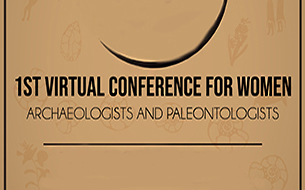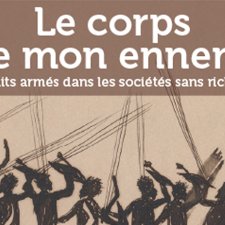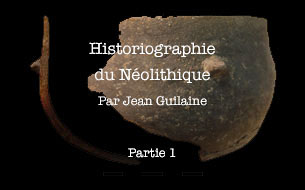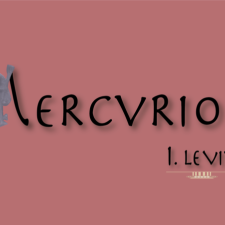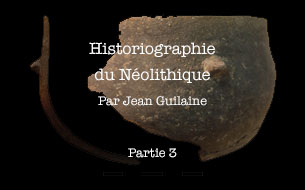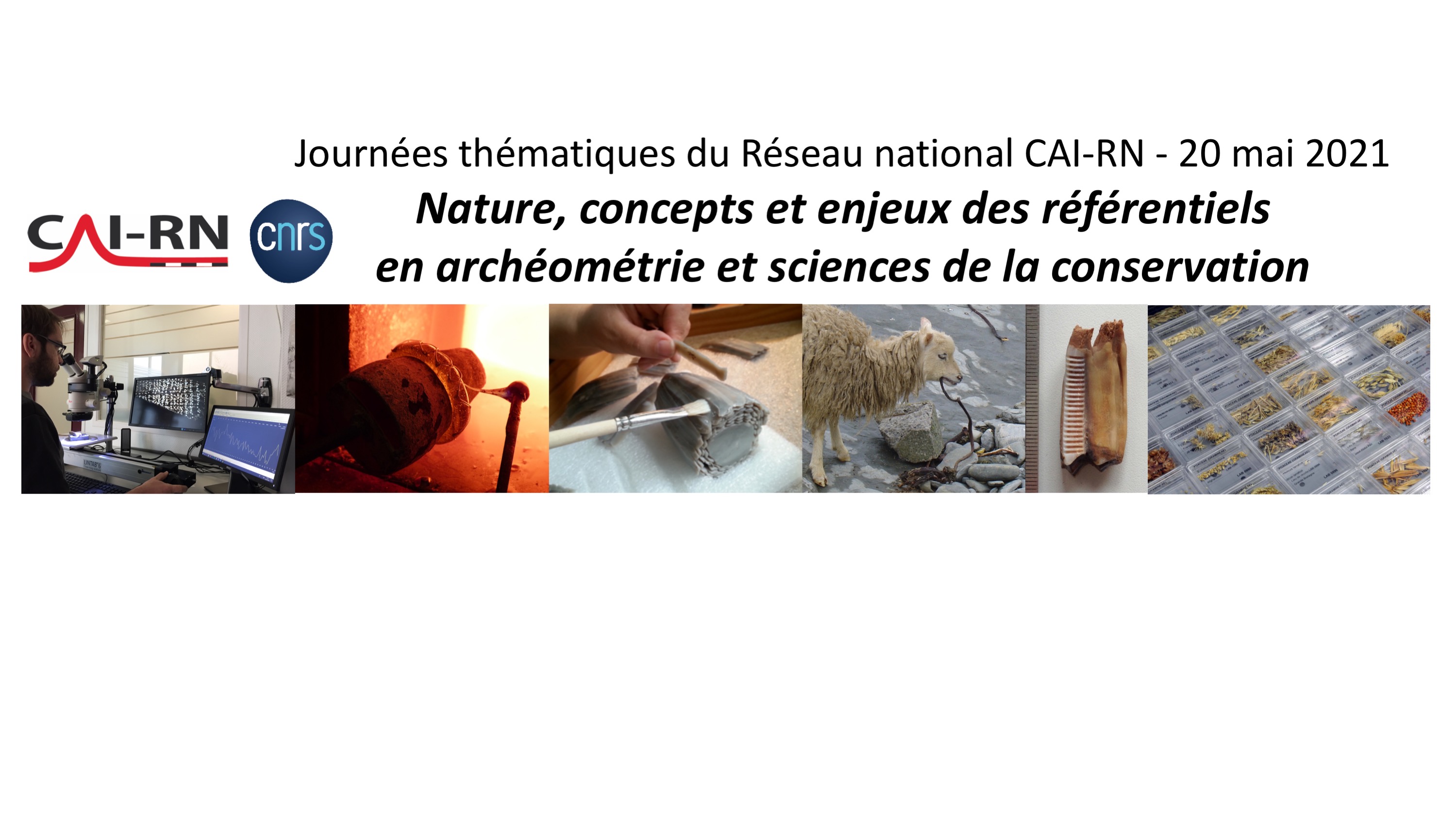Notice
“Feeling at home”: integration of Polynesian women inside pre-existing societies of Vanuatu (Melanesia) / Wanda Zinger
- document 1 document 2 document 3
- niveau 1 niveau 2 niveau 3
Descriptif
“Feeling at home”: integration of Polynesian women inside pre-existing societies of Vanuatu (Melanesia) / Wanda Zinger, in colloque "1st Virtual Conference for Women Archaeologists and Paleontologists. Nouveaux apports à l’étude des populations et environnements passés" organisé par le laboratoire Travaux et Recherches Archéologiques sur les Cultures, les Espaces et les Sociétés (TRACES) de l’Université Toulouse Jean Jaurès et le laboratoire Paléontologie Évolution Paléoécosystèmes (PALEVOPRIM) de l'Université de Poitiers, sous la responsabilité scientifique de Julie Bachellerie, Ana Belén Galán López (Traces), Émilie Berlioz et Margot Louail (Palevoprim). Université Toulouse Jean Jaurès, 8-9 mars 2021. [Conférence enregistrée à distance].
Session 3 : Occupation of territories and population mobility.
Today, some communities in the Vanuatu archipelago (Melanesia), known as“Polynesian Outliers”, display Polynesian cultural features and speak Polynesian languages. These Polynesian influences differ from other cultures, present in the region, which are related to Melanesian influences. It is thought that Polynesian migrations would have particularly contributed to the formation of these “Polynesian” societies of Vanuatu during the last millennium. Yet, archaeological studies do not highlight direct episodes ofhuman intrusion or major cultural transition in the histories of Polynesian Outliers of Vanuatu. The same goes for biological studies encompass on modern populations which do not appear to be closely related to Polynesian groups.This situation allows the development of hypothesis and models on the modalities of Polynesian settlements regarding the biological or cultural integration, within or in marge of the pre-existing societies of Vanuatu. By morphometric analysis of 13 ancient individuals (400-300 BP) form two localities in Vanuatu (Roi Mata burial complex (Eretok, Efate) and West FutunaIsland) compared to a data set of modern individuals from the Oceanian region(n=232), we want to assess the physical presence of Polynesian individual in these localities. Our results show that the Polynesian individuals (n=4), identified in both localities, are all females. More specifically, the analysis of the Roi Mata burial complex shows that 3 Polynesian women certainly had a close relationship with individuals related to the Melanesian pre-existing society suggesting their integration into the local society. Combining oral records of the region, we highlight the role of Polynesian women in thetransmission of Polynesian cultural and linguistical features other generationswithin a Melanesian society.
Certaines sociétés humaines modernes de l’archipel du Vanuatu (Mélanésie) présentent des traits culturels polynésiens et parlent des langues polynésiennes. Ces caractéristiques diffèrent de celles des autres sociétés présentes dans l’archipel qui sont apparentés aux influences mélanésiennes régionales. On suppose que des migrations polynésiennes auraient particulièrement contribué à la formation de ces sociétés « polynésiennes » du Vanuatu lors du dernier millénaire. Pourtant, les études archéologiques ne mettent pas en évidence des épisodes d’intrusions humaines ou de transitions culturelles majeures au sein des séquences chronologiques. Il en va de même des études génétiques sur les populations modernes qui n’apparaissent pas spécialement apparentées à des populations polynésiennes. Cette situation permet l’élaboration d’hypothèses et de modèles interrogeant les modalités de migrations et d’intégrations polynésienne, biologique et culturelle, au sein (ou à l’écart) des sociétés préexistantes du Vanuatu. La présence d’individus originaires de Polynésie a été recherchées au sein de deux de ces sociétés via l’analyse morphométrique des boites crâniennes de 13 individus anciens (400-300 BP) provenant de deux localités du Vanuatu (le cimetière de Roy Mata (Eretok, Efate) et l’île de Futuna Ouest) comparés à un référentiel d’individus modernes d’Océanie (n=232). Nos résultats permettent d’observer la présence (n=4) d’individus Polynésiens de sexe féminin dans les deux localités. Plus spécifiquement, l’analyse du site funéraire de Roy Mata montre l’inhumation de trois femmes polynésiennes au sein d’une communauté d’inhumés d’ascendance mélanésienne ou composite, suggérant leur intégration dans la société préexistante. Ce résultat nous permet de discuter, en lien avec la tradition orale, l’importance du rôle de ces femmes polynésiennes dans la transmission de traits culturels polynésien, au sein d’une société mélanésienne, au fil des générations.
Thème
Documentation
Références documentaires
SPRIGGS, M., LIPSON, M., VALENTIN, F., BEDFORD, S., SHING, R., ZINGER W. et al (2020). Three phases of ancient migration shaped the ancestry of human populations in Vanuatu, Current Biology, 24, vol. 30, 4846-4856.
ZINGER, Wanda, VALENTIN, Frédérique, FLEXNER, James et al (2020). How to explain Polynesian Outliers’ heterogeneity, in A. Hermann, F. Valentin, C. Sand, and E. Nolet, (eds), Networks and Monumentality in the Pacific [Sessions XXXVIII-1,2 of UISPP 2018, Paris], Oxford, Archaeopress, 62-77.
FEINBERG, Richard, SCAGLION, Richard (eds) (2012). Polynesian Outliers:The State of the Art, Pittsburg (Pensylvania), University of Pittsburg, coll. Anthropology Monographs, 21, 225 p.
HERMANN, Aymeric, WALWORTH, Mary (2002). Approche interdisciplinaire des échanges interculturels et de l’intégration des communautés polynésiennes dans le centre du Vanuatu, Journal de la Société des Océanistes, 151, 239-262.
Liens
Programme du colloque "1st Virtual Conference for Women Archaeologists and Paleontologists" (8-9 mars 2021)
Website du Laboratoire Paléontologie Évolution Paléoécosystèmes Paléoprimatologie (PALEVOPRIM)
Livret des résumés des communications du colloque "1st Virtual Conference for Women Archaeologists and Paleontologists. Nouveaux apports à l’étude des populations et environnements passés" (8-9 mars 2021)
Site internet dédié au colloque "1st Virtual Conference for Women Archaeologists and Paleontologists" (8-9 mars 2021)
Dans la même collection
-
Sensivity analysis to morphological changes of the shoulder joint: application to percussio…
Blasi-ToccacceliAliciaSensivity analysis to morphological changes of the shoulder joint: application to percussion gestures during Oldowan debitage / Alicia Blasi-Toccacceli, in colloque "1st Virtual Conference for
-
"Ouranopithecus macedoniensis" (late Miocene, Greece): analysis of mandibular fragments using …
IoannidouMelaniaOuranopithecus macedoniensis (late Miocene, Greece): analysis of mandibular fragments using 3D geometric morphometrics / Melania Ioannidou, in colloque "1st Virtual Conference for Women
-
Comminution capabilities of extant and fossil anthropoids during molar intercuspation: a preliminar…
WalkerAxelle E. C.Comminution capabilities of extant and fossil anthropoids during molar intercuspation: a preliminary experiment using a chewing simulator / Axelle E. C. Walker, in colloque "1st Virtual Conference for
-
New sperm whale cranium from the late Miocene and a revised family attribution for the small crown …
AlfsenApollineNew sperm whale cranium from the late Miocene and a revised family attribution for the small crown physeteroid Thalassocetus / Apolline Alfsen, in colloque "1st Virtual Conference for Women
-
What is shaping the brain? A perspective on brain size evolution in carnivorans / Margot…
MichaudMargotWhat is shaping the brain? A perspective on brain size evolution in carnivorans / Margot Michaud, in colloque "1st Virtual Conference for Women Archaeologists and Paleontologists. Nouveaux
-
Postnatal shape changes in the rodent mandible at a macroevolutionary scale / Morgane Dubied
DubiedMorganePostnatal shape changes in the rodent mandible at a macroevolutionary scale / Morgane Dubied, in colloque "1st Virtual Conference for Women Archaeologists and Paleontologists. Nouveaux apports à l
-
Cranial vault healing in modern humans: input of archaeological and clinical data / Aliéno…
LepetitAliénorCranial vault healing in modern humans: input of archaeological and clinical data / Aliénor Lepetit, in colloque "1st Virtual Conference for Women Archaeologists and Paleontologists. Nouveaux
-
A transdisciplinary approach to reconstruct the Nilotic socio-ecosystem in Luxor west bank during t…
NicatoreGiuliaA transdisciplinary approach to reconstruct the Nilotic socio-ecosystem in Luxor west bank during the Ptolemaic period (3rd-1st centuries BC.) / Giulia Nicatore, in colloque "1st Virtual Conference
-
From monoliths to megaliths: a new approach on the megalithic burials of southwestern France / Bosc…
BoscusSarahFrom monoliths to megaliths: a new approach on the megalithic burials of southwestern France / Boscus Sarah, in colloque "1st Virtual Conference for Women Archaeologists and Paleontologists. Nouveaux
-
Tracing Human Ancestral Migration from its Symbiotic Bacteria / Alexia Nguyen Trung
Nguyen TrungAlexiaTracing Human Ancestral Migration from its Symbiotic Bacteria / Alexia Nguyen Trung, in colloque "1st Virtual Conference for Women Archaeologists and Paleontologists. Nouveaux apports à l’étude des
-
Foragers and their symbolic landscape. Understanding the role of rock art in the territoriality of …
JobardLéaForagers and their symbolic landscape. Understanding the role of rock art in the territoriality of Later Stone Age Matobo populations / Léa Jobard, in colloque "1st Virtual Conference for Women
-
Towards a tracking of past bird seasonal migrations through geological times: what could isotopes t…
DuhamelAnaïsTowards a tracking of past bird seasonal migrations through geological times: what could isotopes tell us? / Anaïs Duhamel, in colloque "1st Virtual Conference for Women Archaeologists and
Sur le même thème
-
Violences interpersonnelles dans la Vallée du Nil à la Préhistoire
CrevecoeurIsabelleLes ensembles funéraires nous renseignent sur la biologie des sociétés passées, leurs relations sociales et leurs comportements rituels et symboliques. Ils peuvent également nous permettre d’examiner
-
Historiographie du Néolithique. 1 / Jean Guilaine
GuilaineJeanCe séminaire relate la mutation de la recherche préhistorique au cours des quatre dernières décennies, et plus précisément l’histoire de la recherche néolithique française qui est celle d’une
-
Les vignes romaines : approches morphométrique et archéogénomique
BoubyLaurentLes vignes romaines : approches morphométrique et archéogénomique
-
Historiographie du Néolithique. 3 / Jean Guilaine
GuilaineJeanHistoriographie du Néolithique. 3 / Jean Guilaine, in "Derniers chasseurs-cueilleurs et premiers paysans : la fin de la Préhistoire en Europe", webdocumentaire réalisé dans le cadre des appels à
-
C. BRASSARD et al., Explorer l’évolution fonctionnelle de la mâchoire des chiens en s’appuyant sur …
Explorer l’évolution fonctionnelle de la mâchoire des chiens en s’appuyant sur des modèles établis à partir de spécimens actuels : exemple d’application à des chiens européens du pré-Age du Bronze
-
E. HERRSCHER et L. MION, Référentiels isotopiques et paléoalimentation humaine : un doux rêve arché…
Référentiels isotopiques et paléoalimentation humaine : un doux rêve archéologique ? Estelle Herrscher et Leïa Mion Aix Marseille Université, CNRS, Ministère de la Culture, LAMPEA, Aix-en
-
E.-M. GEIGL, L’importance des référentiels en paléogénomique
Eva-Maria GEIGL(1), L’importance des référentiels en paléogénomique (1) Université de Paris, CNRS, Institut Jacques Monod L’analyse des génomes anciens préservés dans les vestiges biologiques apporte
-
Sensivity analysis to morphological changes of the shoulder joint: application to percussio…
Blasi-ToccacceliAliciaSensivity analysis to morphological changes of the shoulder joint: application to percussion gestures during Oldowan debitage / Alicia Blasi-Toccacceli, in colloque "1st Virtual Conference for
-
"Ouranopithecus macedoniensis" (late Miocene, Greece): analysis of mandibular fragments using …
IoannidouMelaniaOuranopithecus macedoniensis (late Miocene, Greece): analysis of mandibular fragments using 3D geometric morphometrics / Melania Ioannidou, in colloque "1st Virtual Conference for Women
-
Cranial vault healing in modern humans: input of archaeological and clinical data / Aliéno…
LepetitAliénorCranial vault healing in modern humans: input of archaeological and clinical data / Aliénor Lepetit, in colloque "1st Virtual Conference for Women Archaeologists and Paleontologists. Nouveaux
-
From monoliths to megaliths: a new approach on the megalithic burials of southwestern France / Bosc…
BoscusSarahFrom monoliths to megaliths: a new approach on the megalithic burials of southwestern France / Boscus Sarah, in colloque "1st Virtual Conference for Women Archaeologists and Paleontologists. Nouveaux
-
Tracing Human Ancestral Migration from its Symbiotic Bacteria / Alexia Nguyen Trung
Nguyen TrungAlexiaTracing Human Ancestral Migration from its Symbiotic Bacteria / Alexia Nguyen Trung, in colloque "1st Virtual Conference for Women Archaeologists and Paleontologists. Nouveaux apports à l’étude des


